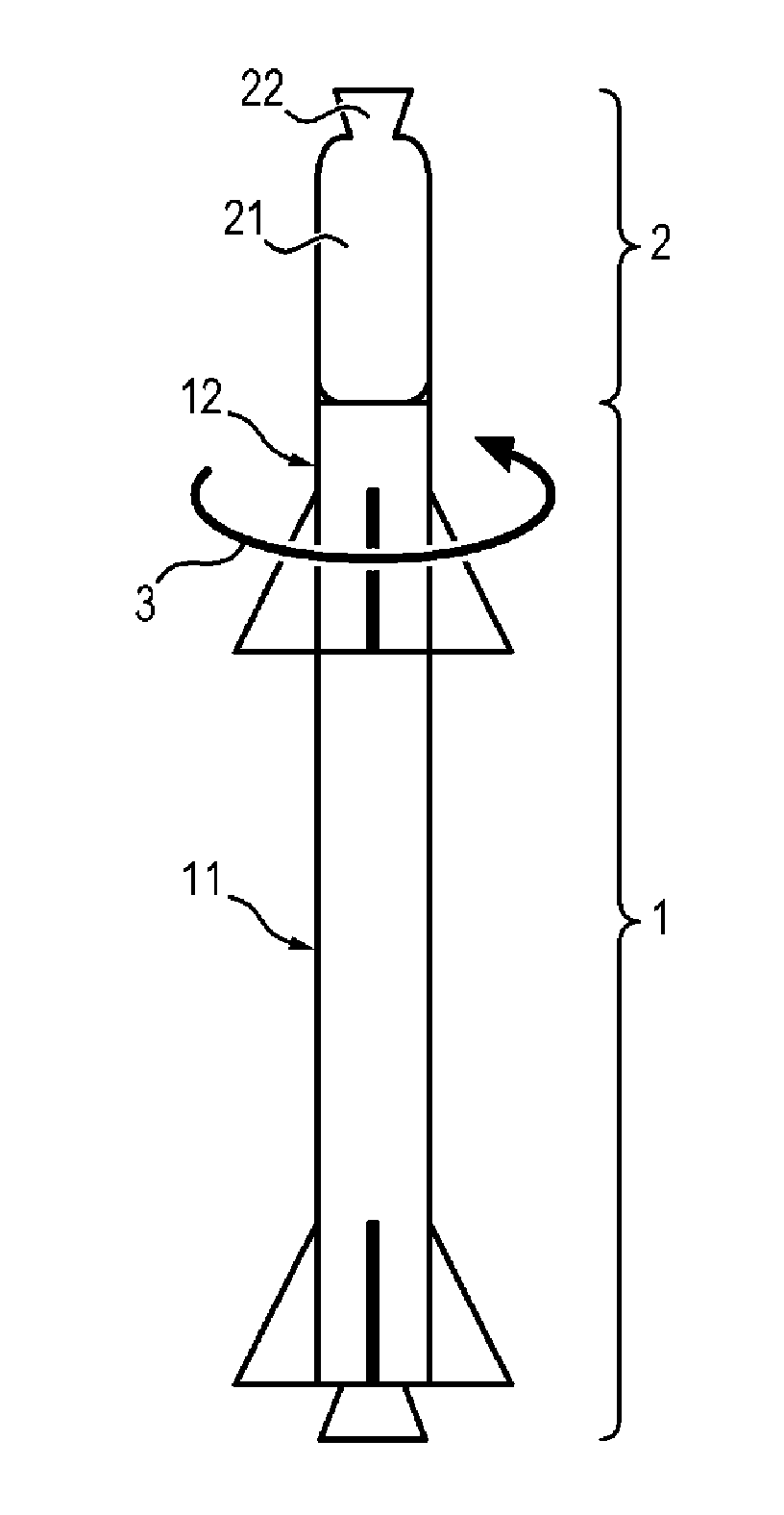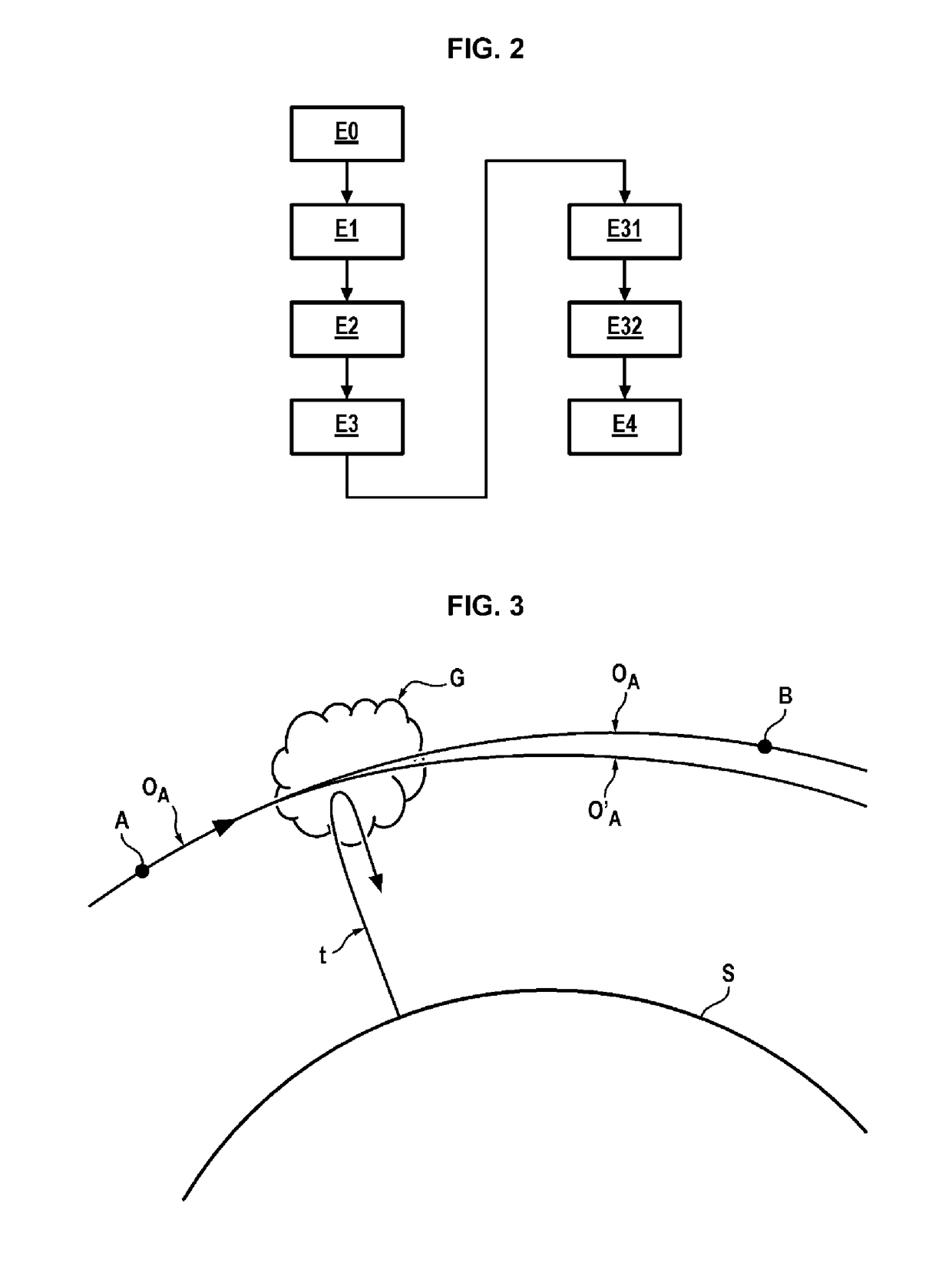Method and device for deflection of space debris
- Summary
- Abstract
- Description
- Claims
- Application Information
AI Technical Summary
Benefits of technology
Problems solved by technology
Method used
Image
Examples
example of application
[0068]The most disturbing catalogued debris are on relatively high and sharply inclined orbits, typically between 700 and 1000 km in altitude, with an inclination greater than 80°. There are two debris in orbit at 850 km in altitude here, 98.6° in inclination. Relevant here is the most critical debris known to date, the 3rd stage of the Cosmos 3M launcher, of mass of 1.5 tons and a surface of around 12 m2.
[0069]There is also the probable average case of advance warning of 24 h, causing launching 12 hours prior to the collision as announced, i.e., 14 orbits.
[0070]If the aim was a change in altitude of perigee of 1 km for debris A, the decrement in speed ΔV to be supplied is 0.2569 m / s. But this also causes a change in period of the debris, decreasing by 0.6346 s. This decrease in period, integrated over 14.13 orbits, means that debris A will pass 14.13×0.6346=8.96 s before debris B at the predicted site of their collision. At the orbital speed of 7426.014 m / s (for this altitude), thi...
PUM
 Login to View More
Login to View More Abstract
Description
Claims
Application Information
 Login to View More
Login to View More - R&D
- Intellectual Property
- Life Sciences
- Materials
- Tech Scout
- Unparalleled Data Quality
- Higher Quality Content
- 60% Fewer Hallucinations
Browse by: Latest US Patents, China's latest patents, Technical Efficacy Thesaurus, Application Domain, Technology Topic, Popular Technical Reports.
© 2025 PatSnap. All rights reserved.Legal|Privacy policy|Modern Slavery Act Transparency Statement|Sitemap|About US| Contact US: help@patsnap.com



